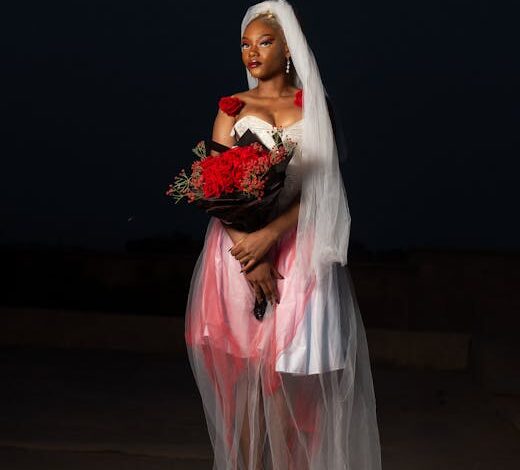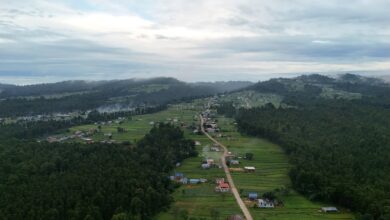OpenAI is Launching the Sora App, Its Own TikTok Competitor, Alongside the Sora 2 Model

OpenAI is Launching the Sora App, Its Own TikTok Competitor, Alongside the Sora 2 Model
Estimated reading time: 7 minutes
- OpenAI is launching the Sora app, an AI-powered TikTok competitor, along with the advanced Sora 2 model.
- The Sora app will allow users to generate videos from text prompts, featuring themselves and friends, fostering new creative expression.
- Sora 2 model significantly enhances video generation quality, length, and consistency, democratizing complex video production.
- OpenAI faces competition from TikTok and Meta but differentiates itself by focusing on AI-generated content rather than captured reality.
- The initiative has vast implications for content creators, marketers, and the future of digital storytelling, while also raising ethical concerns.
- The Sora App: A New Frontier in Social Video Creation
- Sora 2 Model: The Engine of Immersive Creation
- Navigating the Competitive Landscape: TikTok, Meta, and Beyond
- Strategic Implications and Future Outlook
- Actionable Steps for Navigating the Sora Era
- Conclusion
- Frequently Asked Questions
OpenAI, the trailblazing force behind generative AI breakthroughs like ChatGPT and DALL-E, is once again poised to disrupt a colossal industry. Shifting its focus beyond text and static images, the company is reportedly preparing to launch two monumental innovations: the Sora app, a direct challenge to the short-form video giant TikTok, and the immensely powerful Sora 2 model, which will underpin this ambitious new social media venture. This move signals a significant expansion of OpenAI’s influence, promising to redefine how we create, share, and consume digital video content.
The convergence of advanced generative AI with social media platforms heralds a new era of digital interaction. Users will no longer be limited to recording reality; instead, they will possess the tools to conjure entire realities from mere prompts. This strategic leap into the highly competitive social video market underscores OpenAI’s vision: to democratize powerful AI capabilities and integrate them seamlessly into everyday digital experiences.
The Sora App: A New Frontier in Social Video Creation
The upcoming Sora app is envisioned as a revolutionary platform that marries social sharing with cutting-edge AI video generation. Unlike existing platforms where users typically capture and edit real-world footage, Sora will empower individuals to create compelling video content from scratch using artificial intelligence. This core functionality provides a profound distinction in the landscape of user-generated content.
According to initial insights, “The social app Sora will let users generate videos of themselves and their friends, which they can share in a TikTok-like feed.” This statement highlights the app’s deeply personalized nature. Imagine typing a simple text description – “Me skateboarding on the moon with my dog, chased by a friendly alien” – and having a high-fidelity video clip generated within moments. The potential for creative expression is virtually limitless, moving beyond the constraints of physical filming and production skills.
Users will likely interact with the Sora app through intuitive interfaces, utilizing text prompts, image inputs, or even audio cues to direct the AI’s creative process. The emphasis on generating videos “of themselves and their friends” suggests sophisticated personalization features, perhaps requiring user consent and specific data inputs to create hyper-realistic or stylized representations. This personalization could range from hyper-realistic renditions to whimsical, animated interpretations, offering a versatile palette for digital storytelling.
While sharing a “TikTok-like feed,” Sora aims to carve its own niche by offering a fundamentally different content creation paradigm. It’s less about capturing moments and more about manifesting imaginative concepts. This could foster entirely new forms of humor, storytelling, and self-expression, potentially democratizing video production in ways previously unimaginable. The ethical considerations around generating realistic depictions of individuals, however, will be paramount, requiring robust moderation and clear guidelines from OpenAI.
Sora 2 Model: The Engine of Immersive Creation
Powering the ambitious Sora app is the second iteration of OpenAI’s groundbreaking video generation model, Sora 2. Building upon the impressive capabilities of its predecessor, Sora 2 represents a significant leap forward in understanding and generating complex, coherent, and visually stunning video sequences. This advanced model is not merely stitching together images; it’s constructing dynamic, consistent worlds from abstract prompts.
Sora 2 is expected to boast numerous improvements, including the ability to generate longer video segments, enhanced visual fidelity, and a more sophisticated understanding of real-world physics and object interactions. Its capacity to maintain consistent characters, objects, and environments across multiple shots within a single generated video is a critical advancement. This means fewer visual glitches and more seamless narratives, making the AI-generated content virtually indistinguishable from traditionally filmed footage in many instances.
The model’s technical prowess allows it to handle diverse scenes with multiple characters, intricate motions, and precise background details. From simulating detailed urban landscapes to capturing the nuanced expressions of faces, Sora 2’s ability to “create worlds” from simple text prompts is transformative. Its impact extends far beyond social media, holding immense potential for industries like filmmaking, advertising, virtual reality content creation, and even educational simulations, where bespoke video content can be generated rapidly and affordably.
By refining its understanding of temporal dynamics and spatial relationships, Sora 2 enables a level of creative control that was once the exclusive domain of professional production studios. This democratizes the capacity to realize complex visual ideas, making advanced video creation accessible to anyone with an imagination and a descriptive prompt.
Navigating the Competitive Landscape: TikTok, Meta, and Beyond
OpenAI’s foray into the social video arena with the Sora app places it in direct competition with established giants like TikTok, Meta (with Instagram Reels and Facebook Watch), and YouTube Shorts. These platforms command billions of users and significant market share, presenting a formidable challenge for any newcomer. However, Sora’s unique AI-driven approach offers a compelling differentiator.
While TikTok thrives on authentic, often unpolished user-generated content, trending sounds, and viral challenges, Sora aims to empower users to generate entirely new realities. This shifts the focus from recording existing moments to fabricating imaginative ones. The primary challenge for Sora will be overcoming the network effect and user inertia of incumbent platforms, persuading users to adopt a new way of creating and sharing video.
The “creator economy” stands to be profoundly impacted. For content creators, Sora could be an unprecedented tool, allowing them to produce visually complex narratives without needing expensive equipment, elaborate sets, or extensive post-production skills. This levels the playing field, potentially fostering a new generation of creators whose primary assets are their ideas and prompt engineering expertise. Brands and marketers will also explore new frontiers in personalized advertising and immersive storytelling.
However, the ethical considerations are substantial. The ability to generate highly realistic videos of individuals raises concerns about deepfakes, misinformation, and privacy. Robust content moderation systems and clear ethical guidelines will be crucial for OpenAI to build trust and maintain a healthy platform environment. The success of Sora will depend not just on its technological prowess, but also on its ability to navigate these complex societal and ethical challenges.
Strategic Implications and Future Outlook
The launch of the Sora app and the Sora 2 model signifies a pivotal moment in the evolution of digital communication and storytelling. OpenAI’s move into social media is not just about competing for screen time; it’s about fundamentally altering how we perceive and interact with digital content. This transformation could lead to new forms of social expression, where the boundaries between reality and imagination become increasingly blurred.
For marketing and advertising, the implications are immense. Imagine hyper-personalized advertisements where products are showcased within a context specifically generated for an individual user’s interests, or immersive brand stories that evolve based on user input. The capacity for highly customized, engaging content could revolutionize consumer engagement and brand loyalty.
OpenAI’s strategy here appears to be twofold: establishing a direct consumer product to showcase its advanced AI capabilities, and simultaneously pushing the boundaries of what generative models can achieve. By democratizing access to such powerful video generation tools, OpenAI is not only shaping the future of content creation but also influencing broader societal conversations about AI, creativity, and authenticity.
The long-term vision for Sora likely involves continuous integration with other AI models, leading to even more dynamic and interactive experiences. As the technology matures, we can anticipate a future where AI-generated content is not just static video but fully interactive, responsive environments. However, regulatory bodies and policymakers will face increasing pressure to adapt to these rapid advancements, particularly concerning intellectual property, synthetic media, and digital identity.
Real-World Example: Personalized Greetings with a Twist
Imagine a user wanting to send a birthday greeting to a friend who is obsessed with cats and ancient Egypt. Instead of a generic e-card or a self-recorded video, they prompt Sora: “My friend Sarah, wearing a pharaoh’s crown, receiving a birthday cake from a sphinx cat, inside a pyramid filled with balloons.” Sora generates a high-quality, personalized video clip that is entirely unique and deeply engaging, creating a truly memorable moment that would be impossible to film conventionally.
Actionable Steps for Navigating the Sora Era
As the digital landscape evolves with the advent of Sora, certain proactive steps can help individuals and organizations prepare for this transformative shift:
-
For Content Creators: Experiment and Innovate with AI Tools. Don’t wait for Sora’s full public launch. Start exploring existing AI video generation tools (like RunwayML, Pika Labs, or even basic text-to-video features) to understand the workflow and creative possibilities. Develop your “prompt engineering” skills, as the ability to articulate clear, descriptive prompts will become a cornerstone of future content creation. Focus on unique ideas and narrative concepts, as the AI will handle much of the technical production.
-
For Brands and Marketers: Integrate Personalized AI Video Strategies. Begin to conceptualize how AI-generated personalized video can be woven into your marketing campaigns. Think about bespoke product demonstrations, hyper-targeted ad creatives, or interactive brand storytelling that adapts to individual consumer preferences. Crucially, establish clear ethical guidelines for using synthetic media, ensuring transparency and maintaining brand trust amidst the new capabilities.
-
For Developers and Innovators: Explore API Potentials and New Experiences. Anticipate that advanced models like Sora 2 will eventually offer API access. Consider how you can build novel applications, tools, or interactive experiences on top of this powerful video generation engine. Brainstorm services that could leverage AI video for education, customer service, gaming, or even virtual world development. The underlying model offers a rich foundation for entirely new categories of digital products.
Conclusion
OpenAI’s decision to launch the Sora app alongside the advanced Sora 2 model marks a bold and strategic move into the heart of the social media and content creation industries. This initiative promises to blend cutting-edge AI video generation with accessible social sharing, offering users an unprecedented level of creative control over their digital narratives. While challenging established players like TikTok, Sora differentiates itself through its core generative capabilities, fostering a new era of imaginative content.
The journey ahead will undoubtedly involve navigating complex ethical landscapes, particularly concerning synthetic media and digital authenticity. However, the potential for innovation, personalization, and an entirely new paradigm of digital expression is immense. OpenAI is not just releasing a new app; it’s unveiling a glimpse into the future of how we interact with, create, and experience video, forever changing the digital canvas for creators, brands, and everyday users alike.
Are you ready for the next evolution of social media and video creation? Stay tuned for official announcements from OpenAI, and prepare to redefine your digital presence. Share your thoughts on how Sora might change your online experience in the comments below!
Frequently Asked Questions
-
A: The Sora app is OpenAI’s upcoming social media platform designed to compete with TikTok, enabling users to generate videos from text prompts using AI.
-
Q: How is Sora different from TikTok?
A: While TikTok focuses on sharing user-recorded and edited real-world footage, Sora empowers users to create entirely new, imaginative video content from scratch using AI.
-
A: Sora 2 is the advanced AI model developed by OpenAI that powers the Sora app, capable of generating longer, more coherent, and visually stunning video sequences with enhanced fidelity and understanding of physics.
-
Q: What are the main ethical concerns surrounding Sora?
A: Key ethical concerns include the potential for deepfakes, misinformation, and privacy issues due to the ability to generate highly realistic videos of individuals. Robust moderation and clear guidelines will be crucial.
-
Q: How can content creators and marketers prepare for Sora?
A: Creators should experiment with existing AI video tools and develop prompt engineering skills. Marketers should explore personalized AI video strategies, considering bespoke product demonstrations and hyper-targeted ads, while establishing ethical guidelines.





